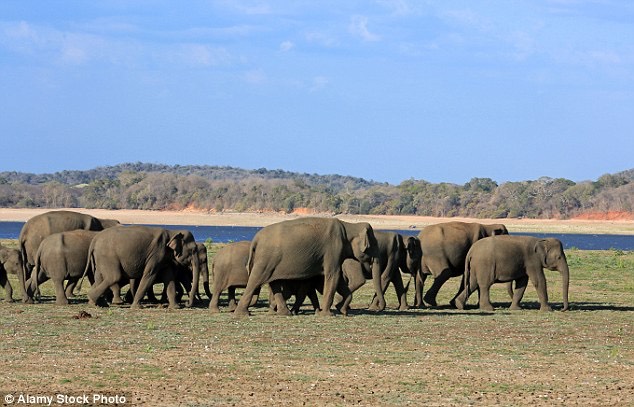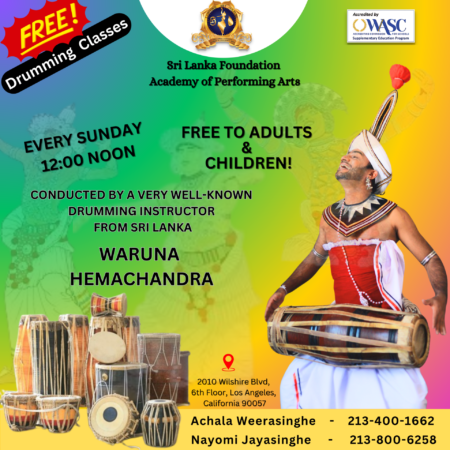by James Delingpole for the Daily Mail
‘Promise me, dad, that you’ll never take us anywhere tropical ever again!’ said my 14-year-old daughter. This is not what you want to hear when you have forked out for the trip of a lifetime to Sri Lanka.
But I knew what she meant. Along with her similarly unimpressed 16-year-old brother and stoical mother, she had been dragged by her cruel father away from the comforts of the lush southern half of Sri Lanka, with its white beaches and boutique hotels, to the northern-most tip of the island, which couldn’t be more different.
Arid, burning hot and scarred by bullet holes, this was the region that saw the bloodiest fighting in the 25-year civil war between government forces and the Tamil Tigers. Until 2009, it was closed to tourists and even now is an adventure.
Our obliging driver, Suresh, had taken us from our rudimentary hotel in the north’s capital Jaffna to a beach resort, owned and run by the army, which supposedly had the best chef on the island.
We hadn’t slept much because of the dodgy air-conditioning. It was almost too hot to go outside for a swim and, anyway, my wife and daughter felt uncomfortable being stared at by the locals who, in the north, aren’t used to Westerners in bathing costumes.
Then came the final straw. Lunch.Just the night before, we had enjoyed the best curries of our lives at a place called Green Grass in Jaffna — mounds of succulent spicy prawns and tender crab, all costing next to nothing.
Today’s extravaganza, however, comprised cold chips sweating beneath clingfilm, and about eight tiny prawns each the size of raisins.
Apparently, the local army chief had been promoted and left the previous day, taking his amazing personal chef — who also ran the restaurant — with him.
It was a reminder of how much the military still dominates the north. Every few miles there are army bases, signalling the government’s determination never to let the conflict — which cost 100,000 lives — break out again.
The people in Sri Lanka are so gentle, warm and welcoming — much more so than in India, I found, and with a more playful sense of humour.
For the first time in years you are now safe to visit hitherto-closed places such as Jaffna, with its candy-coloured Hindu temples and battle-scarred fort, built in the early 17th century by the Portuguese; the deep-water port of Trincomalee with its spectacular diving and whale watching; and the gorgeous beaches stretching south along the largely undeveloped east coast.
Things began to look up on arrival at Jungle Beach, 100 miles south of Jaffna, where we recovered in two luxurious huts with our own private plunge pool. These blended in discreetly with the jungle scrub on the edge of the white sand.
There were giant butterflies, a tame sambar deer (reared from an orphan, now a loveable menace at breakfast), even snakes — harmless ones — which terrify the more squeamish guests.
Tigers, too. Not real ones — leopards are the only big cats in Sri Lanka — but former guerilla fighters, now employed as friendly hotel staff as part of an enlightened rehabilitation programme.
Apart from two trips — snorkelling at Pigeon Island; whale watching off Trincomalee — there’s gloriously little to do here except bake in the sun and sip sour mango cocktails.
About 50 miles further down the coast we paused at another beachside resort, Uga Bay, which really does have the best chef on the island.
If you want to sample Sri Lankan cuisine in all its glories — breadfruit curries, fat banana shrimps, traditional breakfasts of ‘string hoppers’ (like rice vermicelli), daal, coconut sambal and fish or chicken curry — this is the place.
I recommend the evening beach feast, where they carve you a table from the sand, and serve you barbecued lobster, crab, and more prawns by candlelight under the stars.
You need these moments of self-indulgence, though.
Otherwise Sri Lanka — whose spectacularly varied scenery (from the northern salt plains to mountain tea plantations to jungles and beaches), ancient temples and game reserves require long, slow four- or five-hour drives — would be too much of a slog for a family break with bolshie teenagers.
One of the highlights was Ulagalla, a tranquil lakeside resort on a 58-acre estate in the middle of Sri Lanka’s Cultural Triangle — within easy reach of sights such as the temple complex at Anuradhapura and several game reserves, including Minneriya, where we saw 200 elephants and a rare purple-faced leaf monkey.
We all loved the half-day’s train journey from the Central Province to Jaffna; the festival at the Hindu village where the bare-chested men all proudly displayed the mutant bulge on the back of their necks caused by years of devoted bearing of stupendously heavy religious floats; and the visit to our local guide Patthi’s home.
The male teenager has admitted that this was the best holiday of his life. The female teenager has since withdrawn her ban on going anywhere tropical.






















